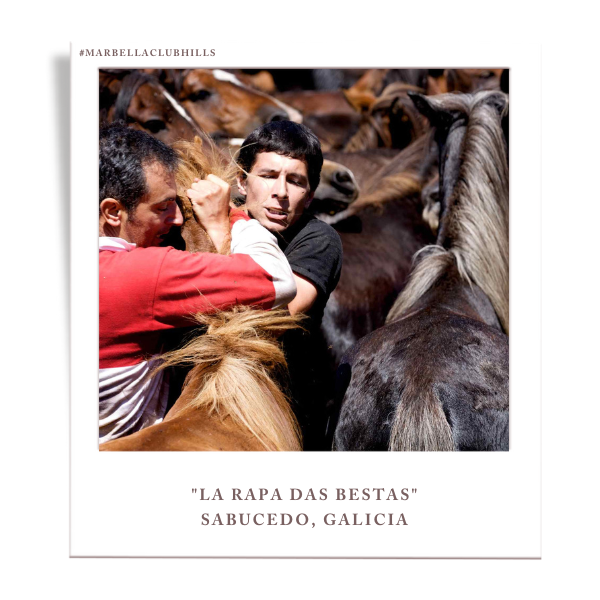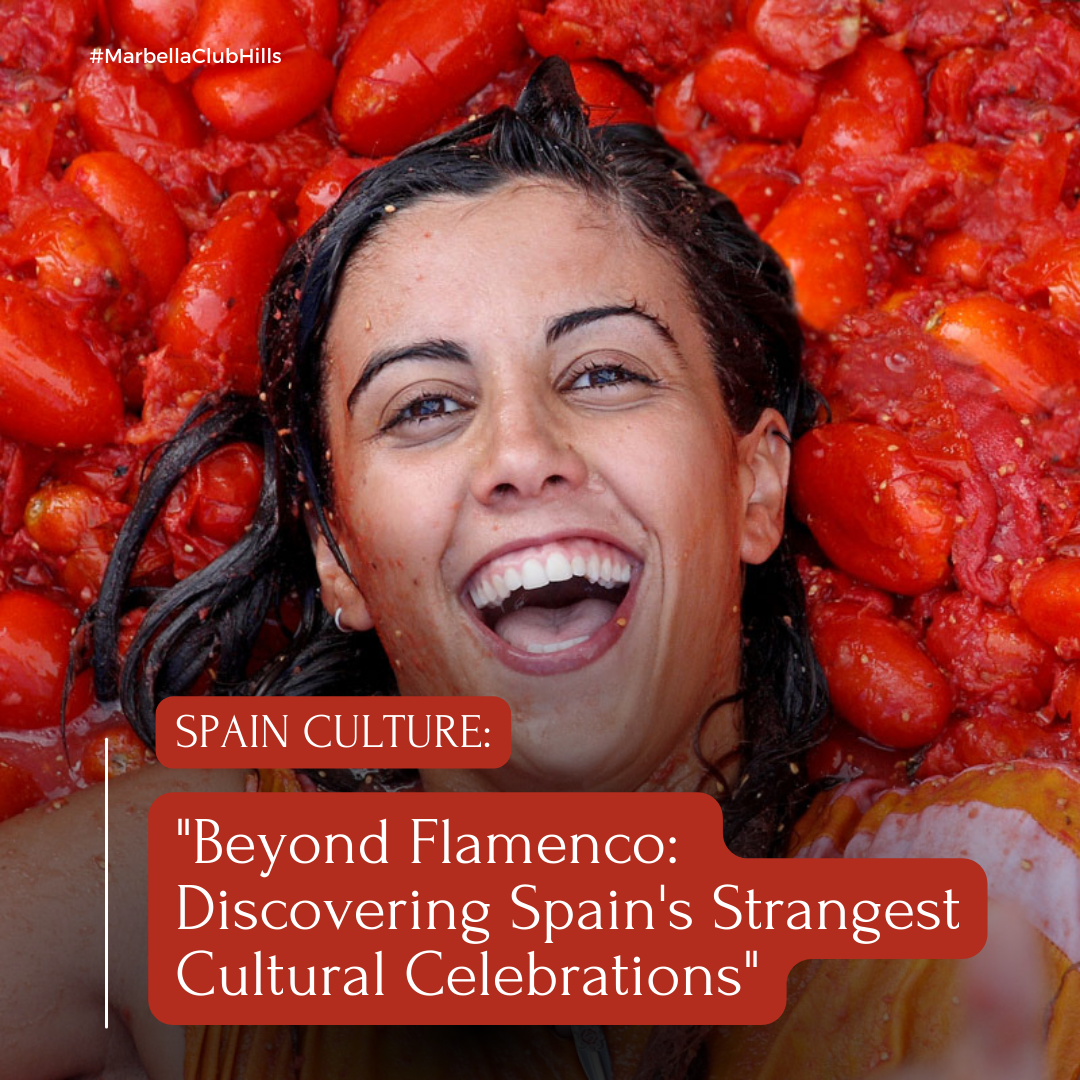Spain is a country with a rich cultural heritage, and its festivals and traditions are as varied as they are fascinating. From tomato fights and devil-jumping to fiery beach bonfires and horse herding, the customs and celebrations of Spain are both unique and captivating. In this blog, we will explore some of the lesser-known traditions that make Spain a country unlike any other. Get ready to be amazed by the incredible diversity of Spanish culture!
"La Tomatina" is a festival that takes place in the Valencian town of Buñol. It involves a huge tomato fight where participants throw ripe tomatoes at each other for an hour. It started in 1945 and has become one of the most popular festivals in Spain, attracting thousands of visitors every year.

The origin of La Tomatina is somewhat shrouded in mystery, but there are several theories about how it started. One theory is that it began as a way for local youth to protest against the town council during a parade in the mid-1940s. Another theory is that it was inspired by a food fight at a carnival in nearby Valencia. Regardless of its origins, the festival has become a beloved tradition in Buñol, and In 2002, it was declared a Festivity of International Tourist Interest by the Spanish government.
"El Colacho" is a festival that takes place in the town of Castrillo de Murcia, in the province of Burgos. It involves men dressed in devil costumes jumping over babies lying on mattresses in the street. Just afterwards, one of the priests approaches and blesses the children. Good and evil want to exert their influence on the children's innocence, but the diabolical influence flees with the Colacho's leap – good has triumphed and the babies are clean of sin.

The origins of the festival are unclear, but some historians suggest that it is rooted in pre-Christian fertility rites. It was banned during the Franco dictatorship for its pagan-like elements but was revived in the 1980s after the end of the dictatorship.
Fallas" is a festival that takes place in Valencia every March. The main attraction of the festival is the creation and burning of large wooden structures, called "fallas," which are often satirical or political in nature. These structures can reach up to 20 meters in height and can take months to construct. During the festival, the city is transformed into a vibrant and colourful spectacle, with streets filled with music, fireworks, and parades.

The origins of the festival are not entirely clear, but it is thought to date back to pagan rituals associated with the arrival of spring. Today, it has evolved into a highly anticipated event that attracts visitors from all over the world. On the final night, the "fallas" are burned in a spectacular display of flames and fireworks, symbolizing the end of the festival and the renewal of life.
"Los Gigantes y Cabezudos" is a traditional parade that takes place in many towns and cities in Spain. It involves large figures, called "gigantes", and people wearing oversized, papier-mache heads, called "cabezudos", parading through the streets to music. The tradition is believed to date back to the Middle Ages.

The "gigantes" represent various historical and legendary characters, while the "cabezudos" often satirize politicians and other public figures. The parade is a colourful and entertaining spectacle that is enjoyed by both locals and visitors alike.
"La Rapa das Bestas" is a festival that takes place in the Galician town of Sabucedo. It involves the herding of wild horses down from the mountains and the "cutting" of their manes and tails. The festival is meant to show the mastery of man over nature and is a symbol of Galician identity.

As you can imagine, this tradition has been a subject of controversy in recent years, with animal rights activists criticizing the treatment of horses. Activists argue that the event is cruel and unnecessary, while supporters of the festival argue that it is a longstanding tradition and an important part of Galician culture. There have been some efforts to make the festival more humane, such as using anaesthesia during the cutting process, but opinions remain divided.
"Els Castells", also known as human towers, is a Catalan tradition that involves the building of tall, intricate human towers. The practice has been documented as far back as the 18th century, and it is considered a key part of Catalan cultural identity. Castells are typically built by teams of people, called "colles castelleres," who work together to create a tower structure that can reach up to ten levels high. The tower is built by carefully balancing each level on top of the one below it, with the uppermost level typically consisting of a small child who climbs to the top and raises their hand to signify the successful completion of the tower. The tradition is often performed at festivals and other cultural events in Catalonia and has gained international recognition for its uniqueness and impressive physical skill.

Els Castells represent solidarity and team spirit among Catalan people. On these depend the success of the tower and even the life of theaixecadors, the young children that climb up to airy heights of more than eight meters to complete the tower.The experience of watching a team of castelleres forming a tower is quite breath-taking.
"La Fiesta de Santa Marta de Ribarteme" is a unique festival that takes place in the town of Las Nieves, in the Spanish region of Galicia. It is celebrated on July 29th each year and is also known as the "Festival of Near-Death Experiences".
During the festival, people who have survived a near-death experience in the past year are carried in coffins to the Church of Santa Marta de Ribarteme, as a sign of gratitude for being given a second chance at life. The participants dress in white, carry candles, and sing hymns as they process through the town.

The festival is said to have originated in the 18th century, and while it has been criticized by some as morbid, it is a deeply rooted tradition in the region and is seen as a way to express gratitude for life.
"Los Hombres de Musgo", also known as "Moss Men," is an ancient tradition that takes place in the town of Béjar, located in the province of Salamanca, Spain. The tradition dates back to the 14th century and is believed to have originated from the Celtic culture.

During the festival, men dress up in green and brown moss-covered costumes, with masks made of cardboard and animal skins. They parade through the streets carrying tree branches and making strange noises to scare children and chase away evil spirits. The festival takes place on December 29th, during the celebration of the Feast of Saint Thomas.
"La Batalla del Vino," or the Wine Battle, is an annual festival that takes place in the town of Haro, located in the La Rioja region of Spain. The festival is held on June 29th, which is the day of Saint Peter, and it involves a huge wine fight where participants douse each other with red wine using buckets, water guns, and other containers.
The festival starts with a procession, where people dress in white and red and carry jugs of wine to the top of a hill called "Bilibio." There, a mass is held and a shout of "¡Viva San Pedro!" is made to start the battle.

The origins of the festival are unclear, but it is believed to have started in the early 18th century as a dispute between two winegrowers. It eventually turned into a celebration, and now it is one of the most popular festivals in La Rioja.


